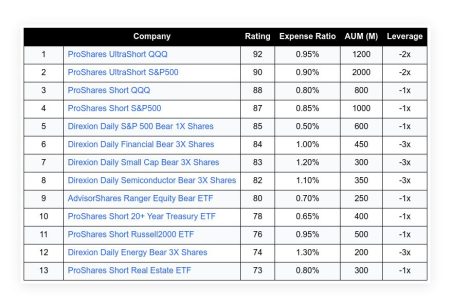Navigating the world of student loan repayment is a challenge for many recent graduates. You must understand your repayment options to manage this debt and help secure your financial future.
In this article, we will take an in-depth look at the issue of student loan repayment. We first examine the different types of student loans; then, we’ll explore your repayment options, including forgiveness programs. Finally, we’ll share a few effective strategies to help you manage your loans and financial life.
Table of Contents
ToggleUnderstanding Your Student Loans
Many new students don’t fully grasp the complexities of student loans. Demystifying the process will help you gear up to proactively manage your repayment plans.
Types of Student Loans
There are essentially two main types of student loans: federal loans and private loans. Either type of loan will help you earn a degree, but there are some differences that you’ll need to understand as a new graduate.
- Federal loans are issued by the U.S. federal government. You’ll usually find these loans carry lower fixed interest rates and more flexible repayment options than many private loan options. Federal loans include Direct Subsidized Loans, Direct Unsubsidized Loans, and PLUS Loans.
- Private loans are issued by banks or other private lenders. These loans are often paired with higher interest rates that are often variable. They also may offer fewer repayment options. That’s why many borrowers look first at federal loans and only apply for private loans if there’s a gap in funding that parent contributions, grants, scholarships, or federal loans can’t cover.
Understanding how interest rates impact your loans and repayment obligations is important, especially the total amount you will be obligated to pay over time is important. Federal loans generally carry fixed interest rates, while private loans can have variable rates (i.e., rates that may change over time).
Loan Servicers and Their Role
Loan servicers are companies that handle the daily tasks associated with managing your loan. Those tasks include billing, borrower payments, loan administration to ensure legal compliance and customer service. It’s important to maintain an open line of communication with your servicer. That way, you’ll stay up-to-date and well-informed about your loan status and available repayment options.
Determining Your Total Debt
Before settling on the right repayment strategy for your student loans, first ascertain the total amount of your debt. You can check your balance for federal loans through the National Student Loan Data System (NSLDS). You’ll need to contact your lender or servicer directly for private loans.
Federal Student Loan Repayment Options
When repaying federal loans, you have several options to consider. Reviewing the requirements and terms for each is a good idea to make sure you choose the right one.
Standard Repayment Plan
The Standard Repayment Plan is the default option for federal loans. Under this plan, you will make fixed monthly payments over a period of up to 10 years. It’s a straightforward approach that will help you pay off your loans in a timely manner if you have sufficient income to make those payments.
Graduated Repayment Plan
For most of us, income increases over time after graduation. You may make an entry-level salary initially, but you could be at a much higher level in ten years. The Graduated Repayment Plan starts with lower monthly payments that gradually increase every two years, creating some flexibility as your financial situation improves.
Extended Repayment Plan
If you borrowed a large sum, consider the Extended Repayment Plan. This plan offers a longer repayment term of up to 25 years, thus lowering your monthly payments. However, you may end up paying more interest over the repayment period.
Income-Driven Repayment Plans
As an alternative to the above-fixed repayment plans, you might prefer an income-driven repayment plan. These plans adjust your monthly payment based on your current income and family size, which can make payments more manageable, especially if you are entering the job market with a lower salary.
The primary income-driven repayment options include:
- Income-Based Repayment (IBR): Payments are capped at 10-15% of your discretionary income, depending on the original date you took out your loans.
- Pay As You Earn (PAYE): Payments are capped at 10% of your discretionary income, but you’ll need to demonstrate a partial financial hardship.
- Saving on a Valuable Education (SAVE): Similar to PAYE and formerly known as the REPAYE plan, this plan is available to more borrowers. Payments are also capped at 10% of discretionary income.
- Income-Contingent Repayment (ICR): Payments under this plan vary based on your income and family size.
These repayment plans each have restrictions and benefits that may change, so it’s important to review the most up-to-date information before you begin repaying your loans and as you implement your repayment strategies.
Strategies for Faster Student Loan Repayment
In addition to available repayment plans, you can use the following strategies to help get your student loans paid off more quickly and save you money.
1. Extra Payments
If your finances allow, consider making extra loan payments. Direct any discretionary funds you might have to the principal balance on your student loans. That will help significantly reduce the total interest you’ll have to pay over time. It’s important that you notify your servicer properly to apply your extra payments to the principal on your loan for the maximum financial benefit.
2. Loan Consolidation
If you have more than one federal loan, consider consolidating them into one to simplify the repayment process. Consolidation essentially combines all your student loans into a single loan with a single monthly payment.
Consolidation may also extend the repayment term and potentially increase the total interest paid, so it’s essential to understand the fine print before you sign any consolidation agreement. There can be some less-than-ethical companies offering consolidation here, too, so it’s wise to research and do some comparison shopping before you select a particular lender.
3. Refinancing
Refinancing your student loan means that you’ll take out an entirely new loan in order to pay off your existing loan or loans, often with a lower interest rate. Generally, refinancing is more applicable to private student loans, but it’s still important to exercise caution, as refinancing can affect or eliminate federal debtor protections and benefits.
4. Budgeting
Creating a realistic budget is essential for getting a handle on your finances, and it’s especially useful when you’re trying to craft a workable loan repayment schedule. Track your income, bills, and purchases to identify areas where you can trim expenses on rent, groceries, utilities, and more. Even small adjustments, like eating in more often or canceling unused subscriptions, can add up to a faster repayment for your student loans.
5. Additional Income Sources
Sometimes, a little extra income can make a huge difference. A second job or side hustle increases your income, which can help you pay back your student loans more quickly. Even a few extra hours each week can add up quickly to a faster repayment.
Loan Forgiveness Programs
You may qualify for various loan forgiveness programs if you work in certain fields or meet specific criteria. The federal loan forgiveness programs include the following:
Public Service Loan Forgiveness
If you choose a career in government or a non-profit organization, the Public Service Loan Forgiveness (PSLF) program can help you considerably. After you make 120 qualifying payments as a full-time employee in either sector, you may be eligible to have your remaining student loan balance forgiven.
Teacher Loan Forgiveness
Similarly, full-time teachers may qualify for loan forgiveness on some of their loans. Borrowers in this program must be employed in low-income schools for at least five consecutive years.
Income-Driven Repayment Plan Forgiveness
This plan is based on participation in an income-driven repayment plan. A borrower who makes payments for 20 or 25 years under one of these plans may be eligible to have any remaining balance forgiven.
State-Specific Loan Forgiveness Programs
In addition to the above federal programs, many states offer their own loan forgiveness programs for residents who work in high-need areas. Research your state’s education department for additional information on available options.
Recent Changes to Student Loan Forgiveness
Note that some aspects of the SAVE plan and forgiveness provisions of the other plans have been the subject of a federal court injunction. As the current administration has made clear its intention to offer borrowers some form of relief, a series of legal challenges have kept the current status of those programs in serious doubt. Keep up with the latest developments from the federal government so that you’ll have the correct information as you formulate your repayment strategies.
Managing Private Student Loans
For those with private loans, student loan repayment options differ from federal loans. Private lenders often offer fewer repayment options. Consult your lender to understand the specific plans available to you and determine what might work best given your circumstances. Don’t hesitate to discuss your repayment situation with your lender. They may be open to adjusting your payment plan or interest rate, especially if you are experiencing financial difficulty.
You may also consider refinancing your private student loans. As with federal loans, refinancing can help lower interest rates. Review the full terms of the refinancing offer and make sure you understand the implications before signing.
Avoiding Default and Its Consequences
Defaulting on a student loan — failing to make payments for an extended period, typically 270 days for federal loans — comes with serious financial repercussions. The consequences of default can include wage garnishment, tax refund seizures, and significant damage to your credit score. These consequences can then negatively impact your ability to secure loans in the future, find an apartment, or sign up for utilities without paying sizable deposits.
Don’t lose hope if you find yourself in default or close to it. You still have options to rehabilitate your loan status and return to good standing, such as making a series of agreed-upon payments or consolidating your loans. Take action as soon as possible to minimize the long-term impact on your finances.
Conclusion
Student loan repayment is complex, complicated by a tangled web of regulations, a mix of private and public entities, and unfamiliar lingo. If that wasn’t enough pressure, the consequences of making a mistake in this area can be pretty profound. Fortunately, it’s not an impossible task. Start by understanding the fundamentals of public versus private loans, then explore the repayment and forgiveness strategies above. Finally, don’t be afraid to ask for assistance. Your educational institution’s financial aid office is a great resource, as is your loan servicer.
















